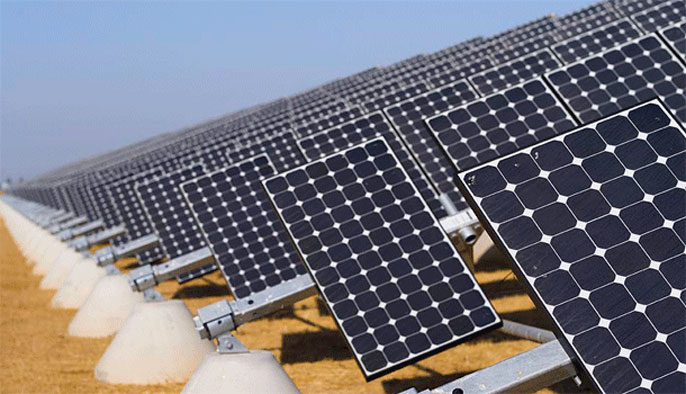
"Green" energy. (Photo: universityofcalifornia.edu)
California Waste and Carbon Emissions Reduction Act
The Act is designed to encourage the development of new, efficient combined heat and power systems
By Chris Micheli, August 14, 2022 3:59 pm
California has numerous formal acts in statute. Public Utilities Code Division 1, Part 2, Chapter 8, Article 1 contains the Waste Heat and Carbon Emissions Reduction Act, which is contained in Sections 2840 to 2843. Article 1 was added in 2007 by Chapter 713. Section 2840 names the act.
California’s Waste Heat and Carbon Emissions Reduction Act is designed to encourage the development of new, efficient combined heat and power systems.
Section 2840.2 provides definitions for the following terms: “combined heat and power system”; “eligible customer generator”; “excess electricity”; and, “greenhouse gas.” Section 2840.4 provides three legislative findings and declarations, including that gigawatt hours of potential useful electricity and millions of British thermal units of thermal energy could be derived from unused waste heat that is currently being vented into the atmosphere.
Section 2840.6 provides three statements of legislative intent, including that it is the intent of the Legislature to support and facilitate both customer- and utility-owned combined heat and power systems.
Section 2841 authorizes the commission to require an electrical corporation to purchase from an eligible customer-generator, excess electricity that is delivered to the grid that is generated by a combined heat and power system that is in compliance with existing law. The commission may establish a maximum kilowatt hours limitation on the amount of excess electricity that an electrical corporation is required to purchase if the commission finds that the anticipated excess electricity generated has an adverse effect on long-term resource planning or reliable operation of the grid.
Every electrical corporation is required to file with the commission a standard tariff for the purchase of excess electricity from an eligible customer-generator. The commission, in reviewing the tariff filed by an electrical corporation, must establish time-of-delivery rates that encourage demand management and net generation of electricity during periods of peak system demand.
The costs and benefits associated with any tariff or contract entered into by an electrical corporation pursuant to this section must be allocated to all benefiting customers. The physical generating capacity of the combined heat and power system must count toward the resource adequacy requirements of load-serving entities.
The commission is required to adopt or maintain standby rates or charges for combined heat and power systems that are based only upon assumptions that are supported by factual data, and exclude any assumptions that forced outages or other reductions in electricity generation by combined heat and power systems will occur simultaneously on multiple systems, or during periods of peak electrical system demand, or both.
Section 2841.5 requires a local publicly owned electric utility serving retail end-use customers to establish a program that (1) allows retail end-use customers to utilize combined heat and power systems that reduce emissions of greenhouse gases by achieving improved efficiencies utilizing heat that would otherwise be wasted in separate energy applications; and (2) provides a market for the purchase of excess electricity generated by a combined heat and power system, at a just and reasonable rate, to be determined by the governing body of the utility.
Section 2842 requires the commission, in approving a procurement plan for an electrical corporation to require that the electrical corporation’s procurement plan incorporate combined heat and power solutions to the extent that it is cost effective compared to other competing forms of wholesale generation, technologically feasible, and environmentally beneficial, particularly as it pertains to reducing emissions of carbon dioxide and other greenhouse gases.
Section 2842.2 requires the commission to ensure that an electrical corporation utilizes long-term planning and a reliability assessment for upgrades to its transmission and distribution systems and that any upgrades are not inconsistent with promoting combined heat and power systems that are cost effective, technologically feasible, and environmentally beneficial, particularly as those combined heat and power systems reduce emissions of greenhouse gases.
Section 2842.4 requires the commission to establish, for each electrical corporation, a pay-as-you-save pilot program for eligible customers. The term “eligible customer” is defined. The pilot program must enable an eligible customer to finance all of the upfront costs for the purchase and installation of a combined heat and power system by repaying those costs over time through on-bill financing at the difference between what an eligible customer would have paid for electricity and the actual savings derived for a period of up to 10 years.
Each electric corporation is required to make on-bill financing available to eligible customers until the statewide cumulative rated generating capacity from pilot program combined heat and power systems in the service territories of the three largest electrical corporations in the state reaches 100 megawatts.
Section 2843 required the Energy Commission to adopt guidelines that combined heat and power systems subject to this chapter.
- Management of Unclaimed Property - December 30, 2025
- Petitions and Responses in Arbitration - December 29, 2025
- Wage Garnishment in California - December 29, 2025




When are they going to pass the “California Waste Solar Panel and Windmill Waste Fiberglass Blade Reduction Act”? That’s the important question!